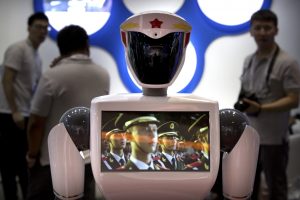There are relatively few points of substantive agreement between the Trump administration, the Biden administration, and the D.C.-based foreign policy commentariat. But the idea that the United States and China are entering an era of aggressive great power competition seems to be nearly universal, with the primary disputes arising over its dimensions and the correct terminology rather than the basic premise.
There is plenty of evidence to support that contention, to be fair. The United States and China have fundamental, potentially irreconcilable, differences in their views of the power balance in the Asia-Pacific region, the importance of democracy, the governance of the maritime commons, and any number of other issues. There are, as strategists are keen to remind us, a number of historical analogies suggesting that Beijing and Washington will not share global influence amicably.
But there is also an element of self-fulfilling prophecy at work here. In trying to frame the future in order to prepare for it, we cast events in recognizable grand-strategic terms: military buildups, the development of spheres of influence, tense negotiations producing specifically delimited agreements, and the absence of a nation-state enemy capable of uniting rivals in common cause. This vision may indeed come to pass, but it would be a mistake to assume that this particular image of the future is prophecy rather than prediction.
Instead of adding to the crowded corpus of work examining the new era of great power competition, let’s look at things through a slightly different frame: Not one of power balancing and geopolitical strategy, but rather how the United States imagines the future and how that defines Washington’s view of the current situation.
The first key point is that the future rarely cooperates with our attempts to imagine it. “Visionary” tales of the future are noted in retrospect for getting only some things right. Jules Verne predicted the existence of deep-diving submarines and nuclear energy, but a modern re-reading of “20,000 Leagues Under the Sea” reveals a huge range of promising theories and hypotheses about technology and natural phenomena that simply did not pan out.
In the most basic terms, the fundamental problem in accurate projection is with worldbuilding. Think of prediction like additive manufacturing: The narrative is constructed from layers of prediction laid upon each other. A simple prediction about the near future – “trend X will continue” – can be relatively durable, but each additional step into the future requires a leap of logic. That, in turn, weakens the entire structure. If trend X does not continue, the subsequent assumption that trends Y and Z will occur collapses as well.

































